
In a few weeks, Gabriela Hearst will take her final bow at the helm of Richemont-owned French luxuriate, Chloé. As it was reported at the time of her denature, the Uruguayan designer reportedly stepped away from her three-year tenure to focus on her own eponymous label.
Naturally, the mystique around the circumstance of her departure piqued our interest in what she’d present on the runways at New York Fashion Week come September. But with that moment finally arriving and passing, it’s clear from Hearst’s Spring/Summer 2024 collection that the designer is keeping her plantable cards close to her chest.
Read more: Catch Up on All the NYFW Stories Here
With Hearst one of the leading figures in the realm of sustainable luxury—a trait courtesy of her unwavering commitment to craft-led design and purposeful creation—this collection felt like an ode to the fabrics themselves, rather than an extension of her signature kaleidoscopic weaving.
Hearst’s modest yet meaningful vocabulary came to the forefront in nifty tailoring, delicate interlacing and decisive embroidery. Sticking to a predominately black and white colour palette—save for a metallic scoop neck dress or colourful vertical-stripe kaftan—Hearst’s resolve is that clothing should embraces the nexus of their intention.
Each piece is carefully manufactured with nimbleness so that they’re underpinned by a sense of humanity. Silhouettes reflect the sense of tradition and heritage that Hearst has come to be internationally lauded for. Tailored blazers and trenches are softened through sheer, softly pleated trousers.
Shirting finds new forms in shiny leather or soft cotton, inviting a dialogue between where outerwear ends and the layers underneath begin. This motif continues through Hearst’s spin on sheer dressing, with softly knitted maxi dresses that emulate fishnets laid over sleek bralettes and full-coverage bloomers.
In Heart’s interplay between textures and tones (see: an ivory pleated maxi skirt paired with a smooth hip-pairing bodysuit), the designer adheres to a strict doctrine of fundamentalism. That’s not to say the discipline of design wasn’t pushed beyond its conventional form, but that the elements of craftsmanship became the priority. A classic redux, if you will.

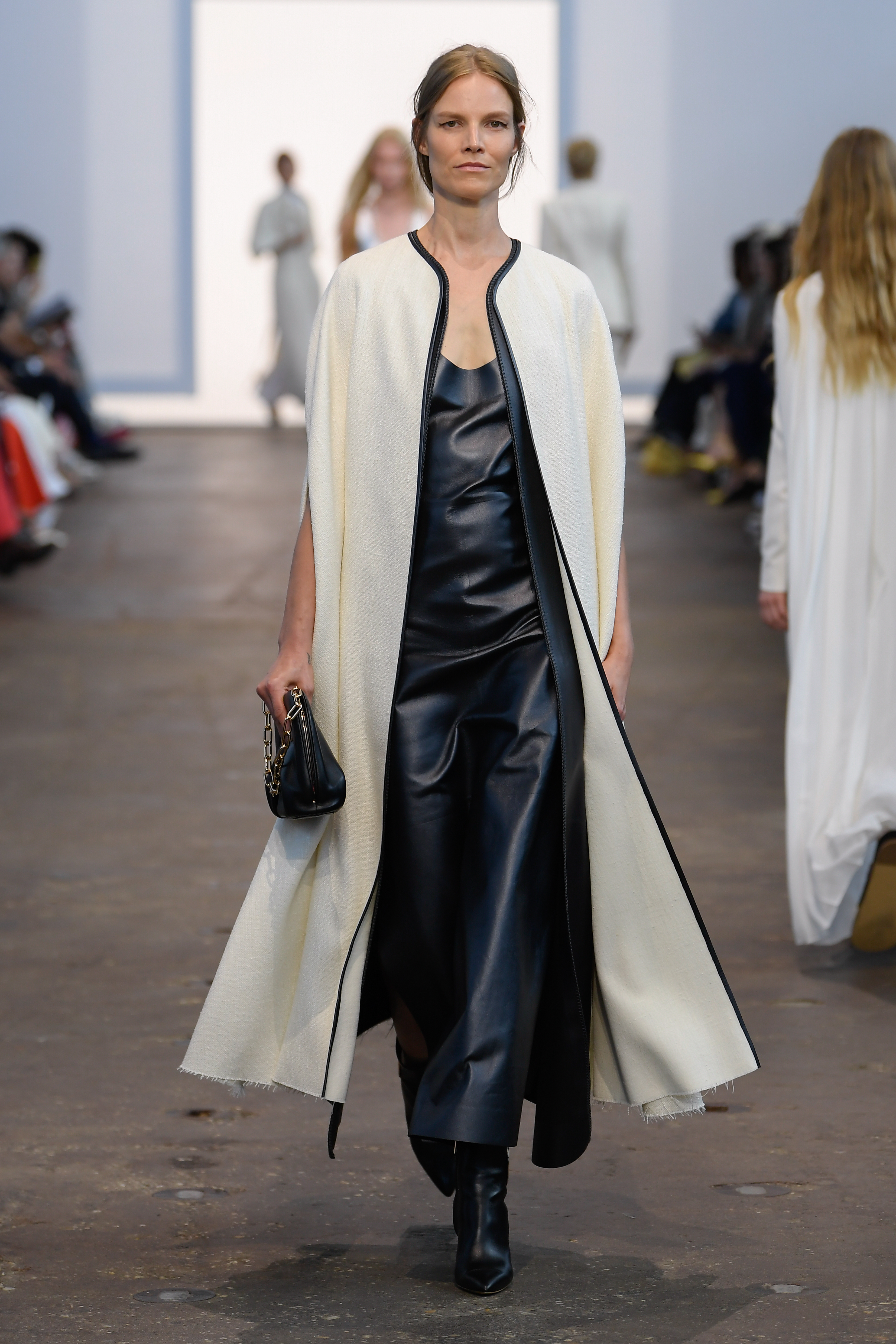

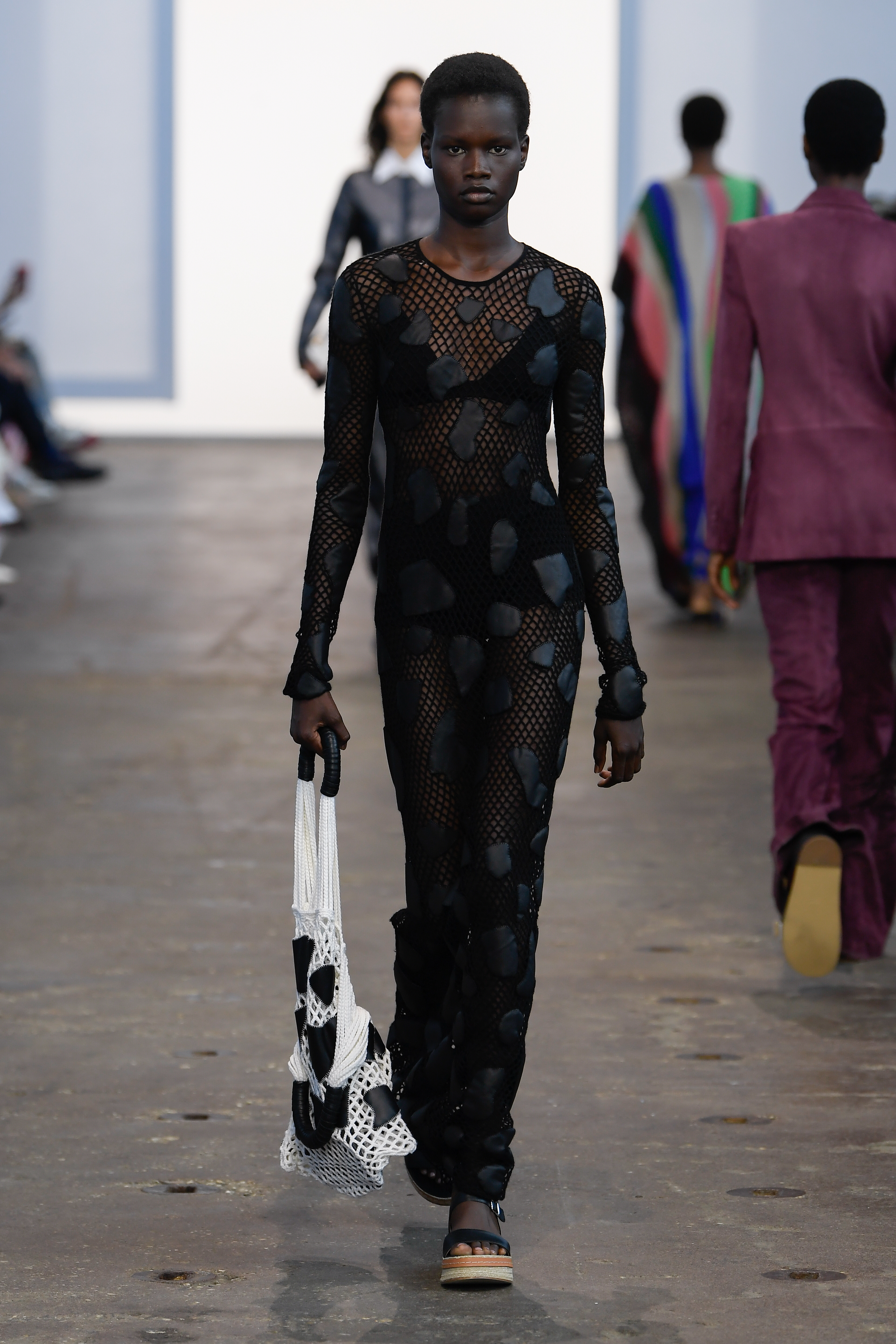
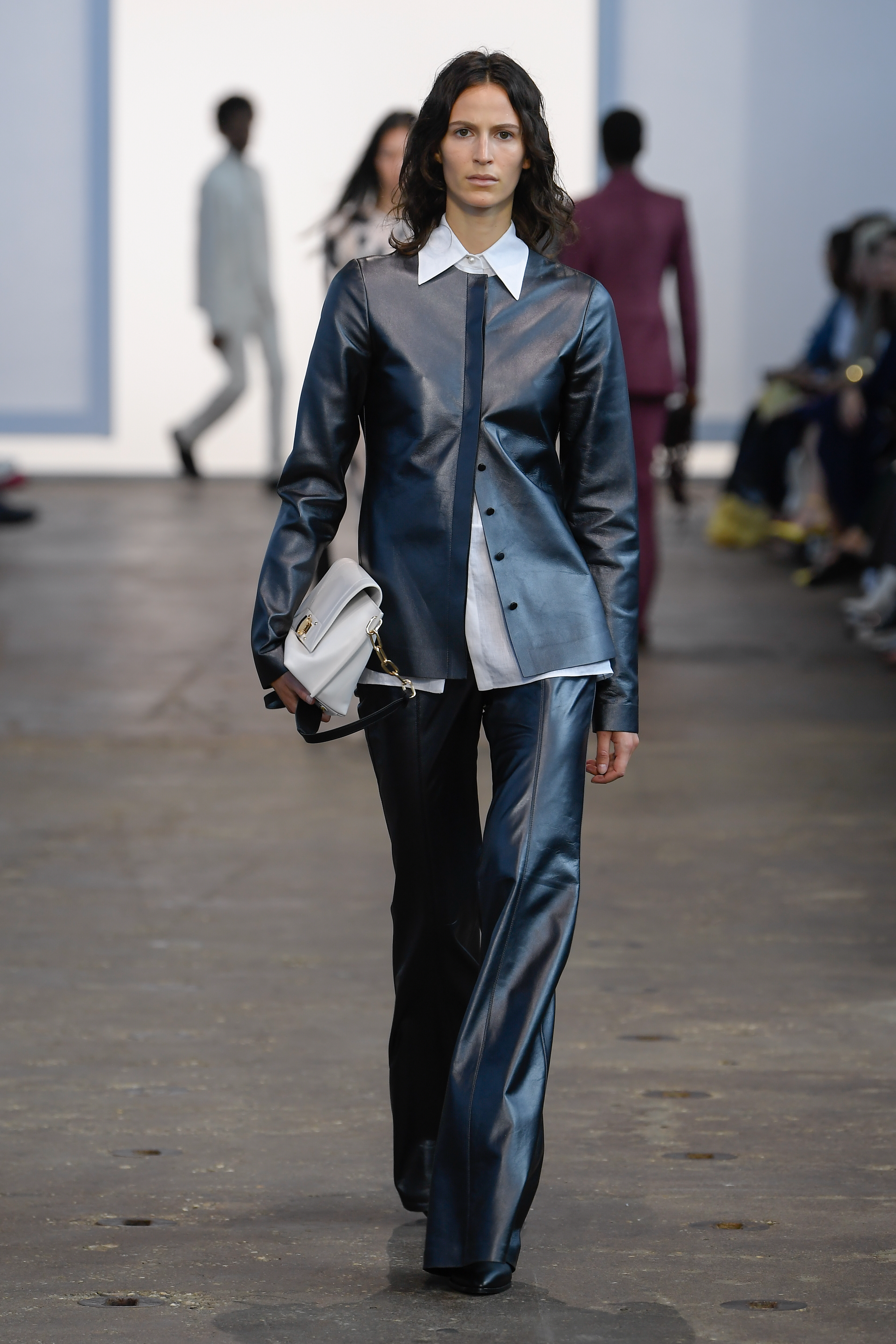
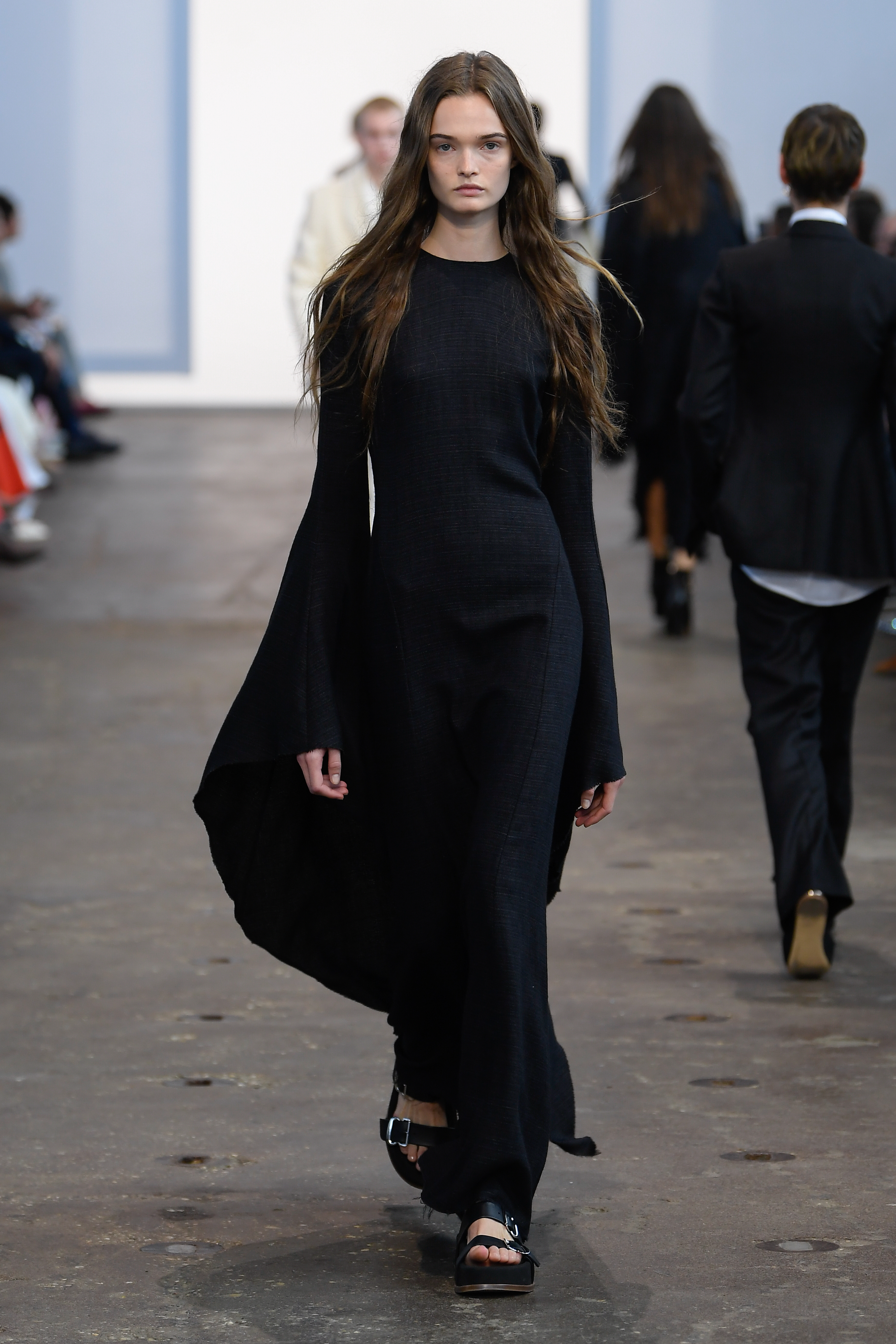
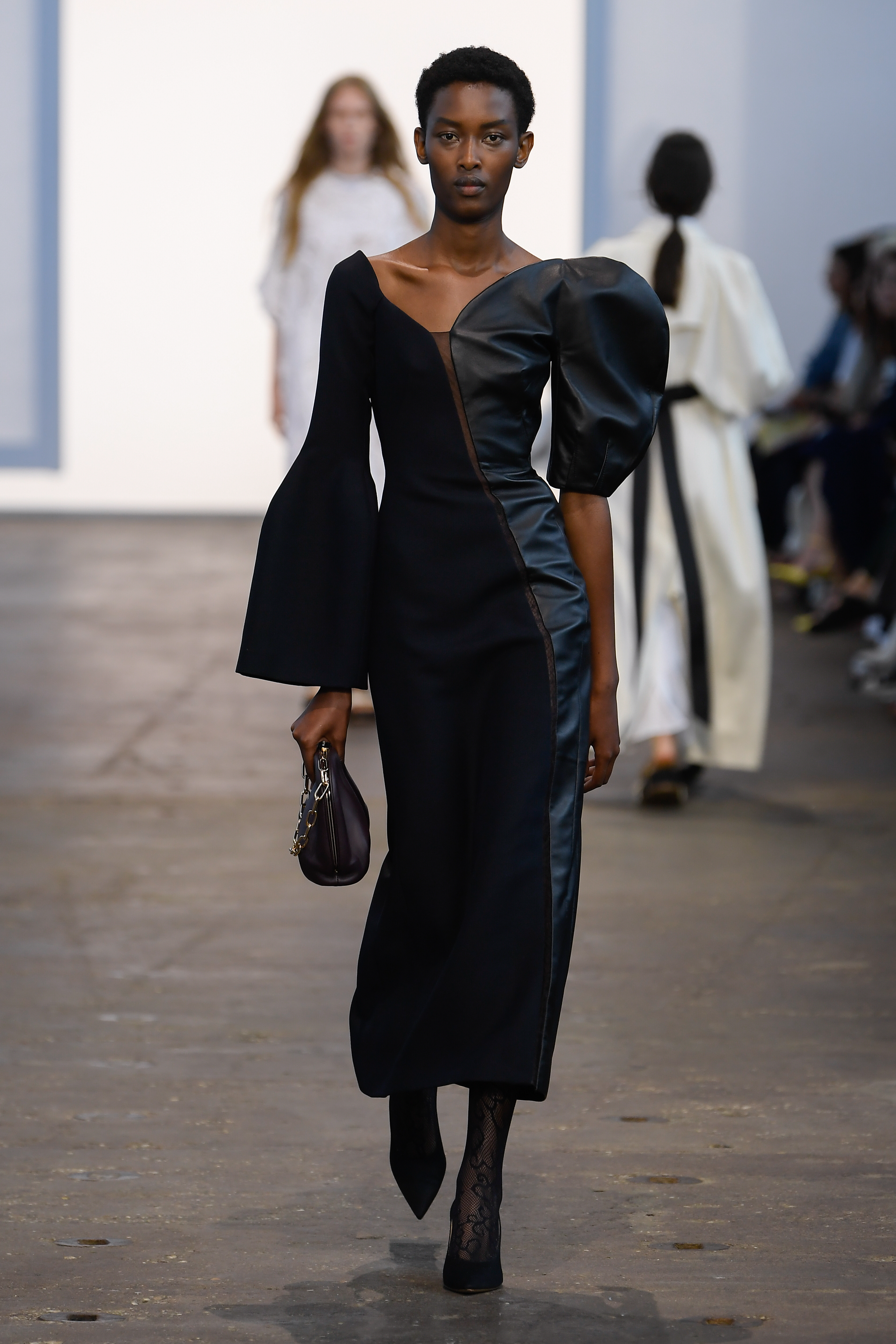

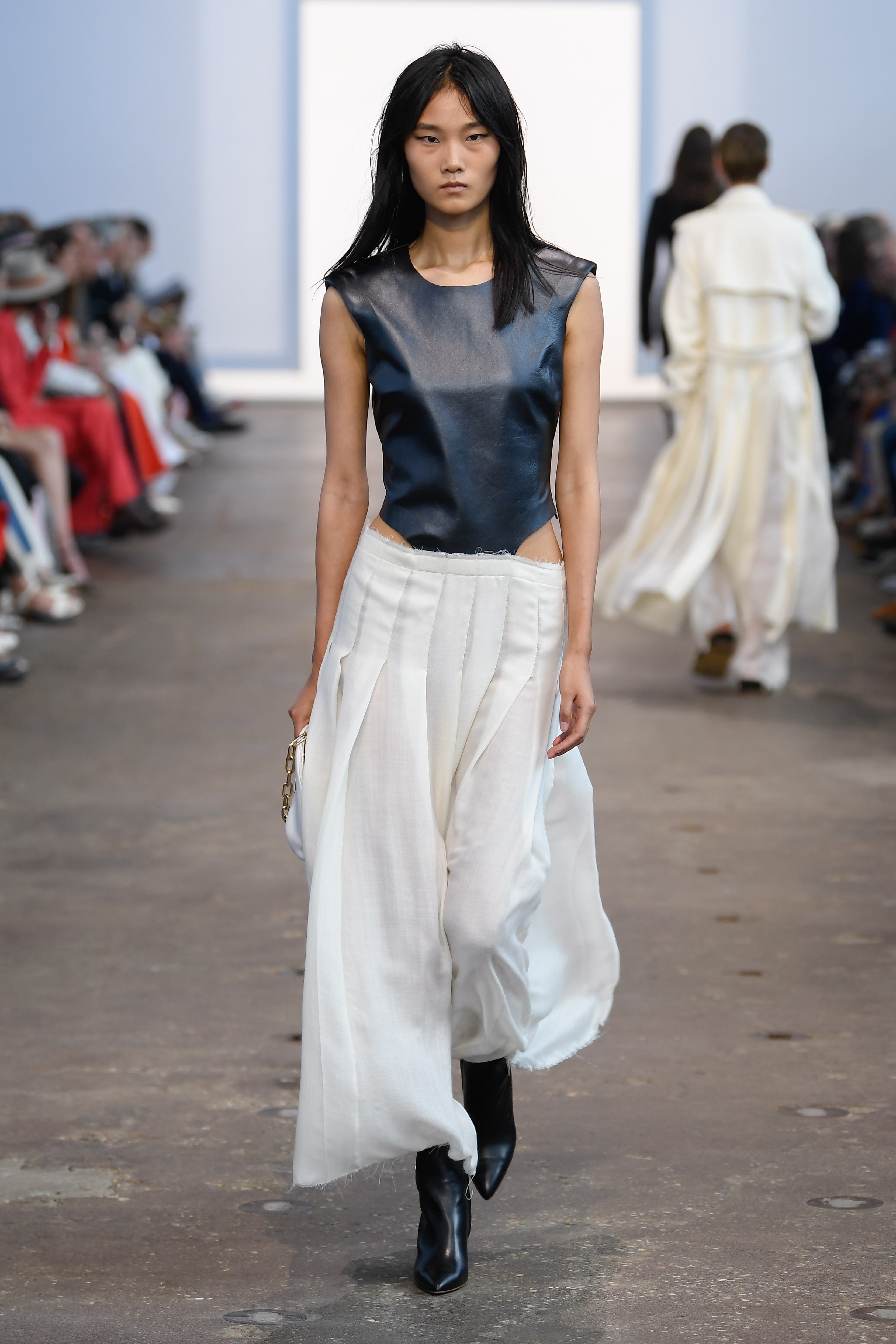
This story first appeared on GRAZIA International.
